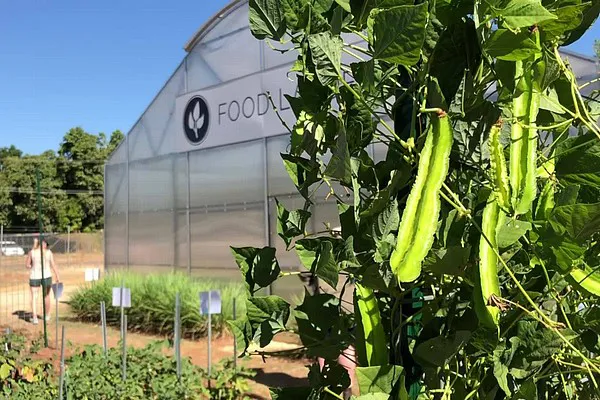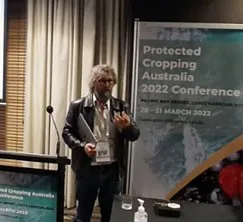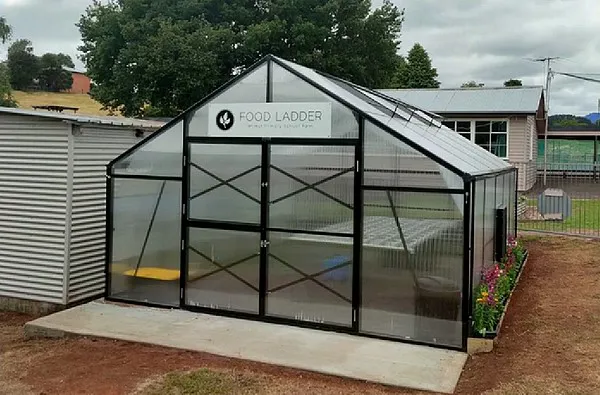An Australian not for profit organisation has established learning programs, not only aimed at increasing the consumption of fruit and vegetables among children but also providing a pathway for students to take up jobs in horticulture.
Food Ladder notes that around just six per cent of Australian kids are eating the required amount of fresh fruit and vegetables every day, and there is a need to better link the production of food to education and outcomes. Horticulture and Training Manager Scott McDonald explains the organisation has been using hydroponic technology and climate-controlled greenhouses with small scale food growing systems and specialised education resources, so students and communities in regional areas can grow their own produce.
"I have heard examples where kids think that (potato) chips come from the ocean because they got them at a fish and chip shop," he said. "There is not that knowledge of where the food comes from or how to grow it. There has been a growth in the past 5-10 years of food gardens and programs in schools. But we are still seeing a large gap because traditional growing methods don't always fit well with the school year, and students weren't learning about new technology in our industry - and protected cropping and hydroponics were one of those areas that have heavily been left out. The idea of a climate-controlled hydroponic greenhouse allows the students to explore areas around Science, Technology, Engineering and Mathematics (STEM) and we do have a lot of students who have come through our existing projects, but we needed to find a way to get into schools so that they had these growing systems sitting on their doorstep."

The organisation has several purposes, including increasing access for people in remote areas to fresh produce, as well as improving life skills, health and nutrition, and education and training to the point of establishing their own social enterprises. Initial projects were on the roofs of schools in India, as well as in schools in Australia's Northern Territory in areas of Katherine and Arnhem Land. Food Ladder is supported by donations from corporate and philanthropic partners, rather than government funding.
"We set about designing a greenhouse system that would work for a school, looking at all the existing technology that is absolutely incredible, in this industry," Mr McDonald said. "Then stripping that back to something that was going to work for teachers and students who don't know a lot about horticulture, let alone running a greenhouse. By late 2020, we were ready to put our first greenhouse  into a school, which was a special needs school in Katherine. By the end of the term, the students had already produced a crop of basil - which was then turned into pesto and they sold it to teachers and parents. All of that was built into their education program. We are not only supporting by putting the greenhouses in but creating the curriculum-aligned resources for students and teachers, as we found that if you can develop the programs and tools, teachers will use it as they are time-poor."
into a school, which was a special needs school in Katherine. By the end of the term, the students had already produced a crop of basil - which was then turned into pesto and they sold it to teachers and parents. All of that was built into their education program. We are not only supporting by putting the greenhouses in but creating the curriculum-aligned resources for students and teachers, as we found that if you can develop the programs and tools, teachers will use it as they are time-poor."
There are now seven different projects across Australia, with plans to grow to include schools in every state in Australia. Mr McDonald says it fits well with the growth of the protected cropping industry in Australia because it is not only teaching the students important life skills but creating a workforce.
"We have developed all the educational tools to open up the opportunities and unlock that potential within students," he said. "Where we are seeing the real benefit to this and where it is going to have a really interesting impact is in Central Australia, where one of the projects could create a model for career pathways into the protected cropping industry.
The Aboriginal land has been opened up to agriculture development, as a way of generating income for that community region and as part of that, there are plans for 90 hectares of horticulture production to go ahead in the next 12 months. We have worked with schools and another organisation called Centrefarm. The kids are doing activities in the greenhouse nearly every day, and Centrefarm is also putting in a climate-controlled greenhouse at their workplace employment farm that they are developing as a commercial training farm facility. The whole idea is to create 12 years of learning and career pathways for these students."

Mr McDonald explains that there are more than 120 resources now available on the platform that is available to any school, not just Food Ladder partners or those using greenhouse systems. All the organisation is asking for in return is data from the schools in order to compile, so it can grow the funding base. It is also seeking industry support in any way that could help the students grow their knowledge and transition into the workforce.
"We are too reliant on sitting in classrooms, reading books and copying things off a blackboard," Mr McDonald said. "We need to get back to the training and education outside of the classroom."
 For more information
For more information
Scott McDonald
Food Ladder
info@foodladder.org
www.foodladder.org
